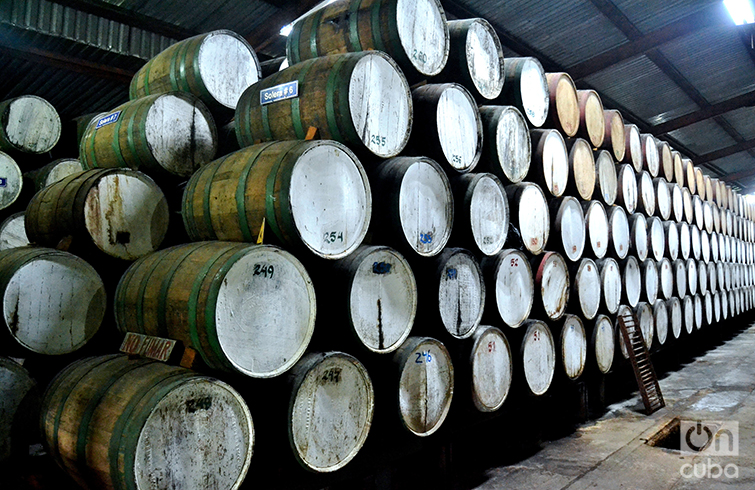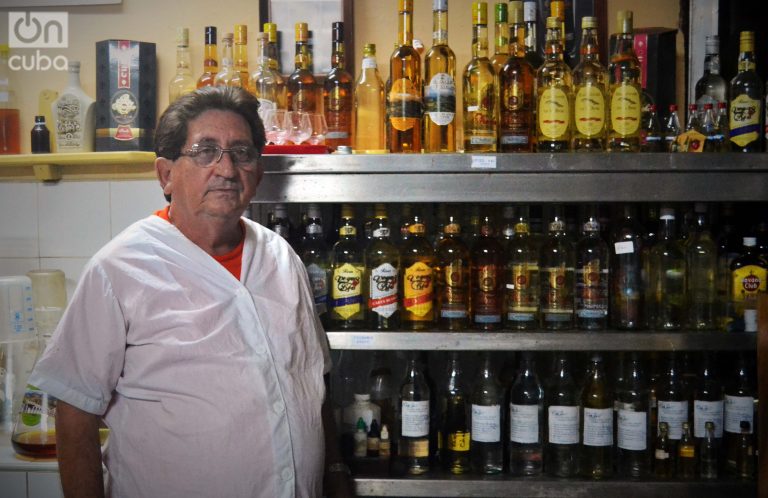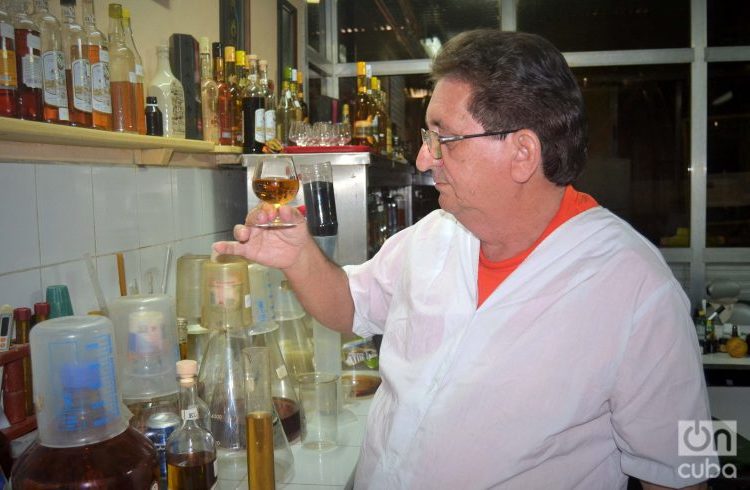Javier dreams of a 50-year rum, an aged spirit that perhaps he’ll never see. “I would need 20 more, but it satisfies me to think that one day it will be done and when someone tastes it he will say: ‘this cellar was prepared by Javier.’”
Sitting behind an enormous desk full of papers, among shelves with bottles of vodka, silver dry, refined, white, golden, carta oro and aged rums, he tries to remember why he liked to mix the substances.
“I started in chemistry when I was 15 and for 14 courses I was the subject’s professor, but what’s nice about this subject is to put it into practice and not just writing symbols on the blackboard,” he says.
And that was it?
“Well, yes, I had the desire to work in a factory with chemistry as its base and I got to the rum industry.”
Francisco Javier Sabat created almost all the rums consumed today in Pinar del Río and has been working for 30 years in El Valle factory. He is one of the oldest specialists from his province and wants to become a Rum Maestro.
“There are only eight in Cuba. If I achieve it, it would be sublime,” he says.
For Javier, tasting a good rum “is an art and a ritual. In some things we are no longer the best in the world, but in the rum industry yes because that mystery is Cuban.”

The first thing that impresses him about a rum is its shine, the transparency, the color. Afterwards he notices the aroma and there, he says, is that the tasting immediately begins with the different parts of the tongue to detect if it is sweet, acid or spicy. Finally, it goes down the throat and other sensations are perceived.
“Even the sense of touch comes in,” says Javier, “because it is very common in Cuba to pour some drops on the hand and perceive other characteristics of the spirit.”
***
There are some very simple rums with little time of preparation, others remain in the barrels 25 or 30 years. The cycle is long. The American white oak barrels, all of them imported, have to be selected: knowing the ages, composition of the oak and what you expect from them.
For a faster time newer barrels are used; for a slower effect barrels that have been used for a longer time. If you aim to homogenize the mixtures you use much older barrels which contribute less but that give the “touch” of each chemist. “What’s paramount is that, dreaming how the product will be,” he says.
How many have you created?
“The Factory has the entire Cuban portfolio; from a vodka to a 15-year-old rum. Somehow I have been the father of all of them.”
In addition to the Arecha and the 15-year Legendario, both with a gold medal in the Havana International Trade Fair, El Valle is the house’s distinctive label. Each one has its own characteristics.
“What’s most Important?, its typical quality. It’s like the idiosyncrasy of the people of Pinar del Río: we aren’t smooth, because even the geography is abrupt. When you taste it it’s not a simple liquid. The bottle is slender and resembles, together with the label and seal, a cigar. It is designed for export.”
Javier’s principal wish is still intact: making a rum that tastes good to the palate and that doesn’t cost much. It is a chimera, as he confesses, because the prices on the market are high, the merchandise has to be economical and spirits are not a material or spiritual need, they are a pleasure with its negative effects, “but in small doses it isn’t harmful,” he says.
For a faster period newer barrels are used; for a slower effect barrels that have been used for a longer period. Photo: Glendy Hernández.
***
Which rum do you prefer?
I like all the white rums and if it’s made well and the tradition has been respected. Of course, I prefer the older ones which are the ones that allow you to assess their beauty.
How do you know that it has the right quality?
To make a 5-year one it takes a longer time. We have bases that date back to 1990, almost since I started here. It’s like a child you follow and follow.
***
Javier is always working with different rums and mixtures.
“I’ve ordered a new product that should come out in the coming months and now my mind is busy all the time on that.”
I suppose you already know its name….
No, that is almost always what comes last, just like when a child is born.











